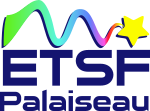| Author | |
|---|---|
| Keywords | |
| Abstract |
The success of Density Functional Theory (DFT) is partly due to that of simple approximations, such as the Local Density Approximation (LDA), which uses results of a model, the homogeneous electron gas, to simulate exchange-correlation effects in real materials. We turn this intuitive approximation into a general and in principle exact theory by introducing the concept of a connector: a prescription how to use results of a model system in order to simulate a given quantity in a real system. In this framework, the LDA can be understood as one particular approximation for a connector that is designed to link the exchange-correlation potentials in the real material to that of the model. Formulating the in principle exact connector equations allows us to go beyond the LDA in a systematic way. Moreover, connector theory is not bound to DFT, and it suggests approximations also for other functionals and other observables. We explain why this very general approach is indeed a convenient starting point for approximations. We illustrate our purposes with simple but pertinent examples. |
| Year of Publication |
2022
|
| Journal |
npj Computational Materials
|
| Volume |
8
|
| Number of Pages |
98
|
| Date Published |
2022/05/02
|
| ISBN Number |
2057-3960
|
| URL |
https://doi.org/10.1038/s41524-022-00762-2
|
| Download citation |
Connector theory for reusing model results to determine materials properties
Developed & Designed by Alaa Haddad. Customized by ETSF Palaiseau © 2025.
